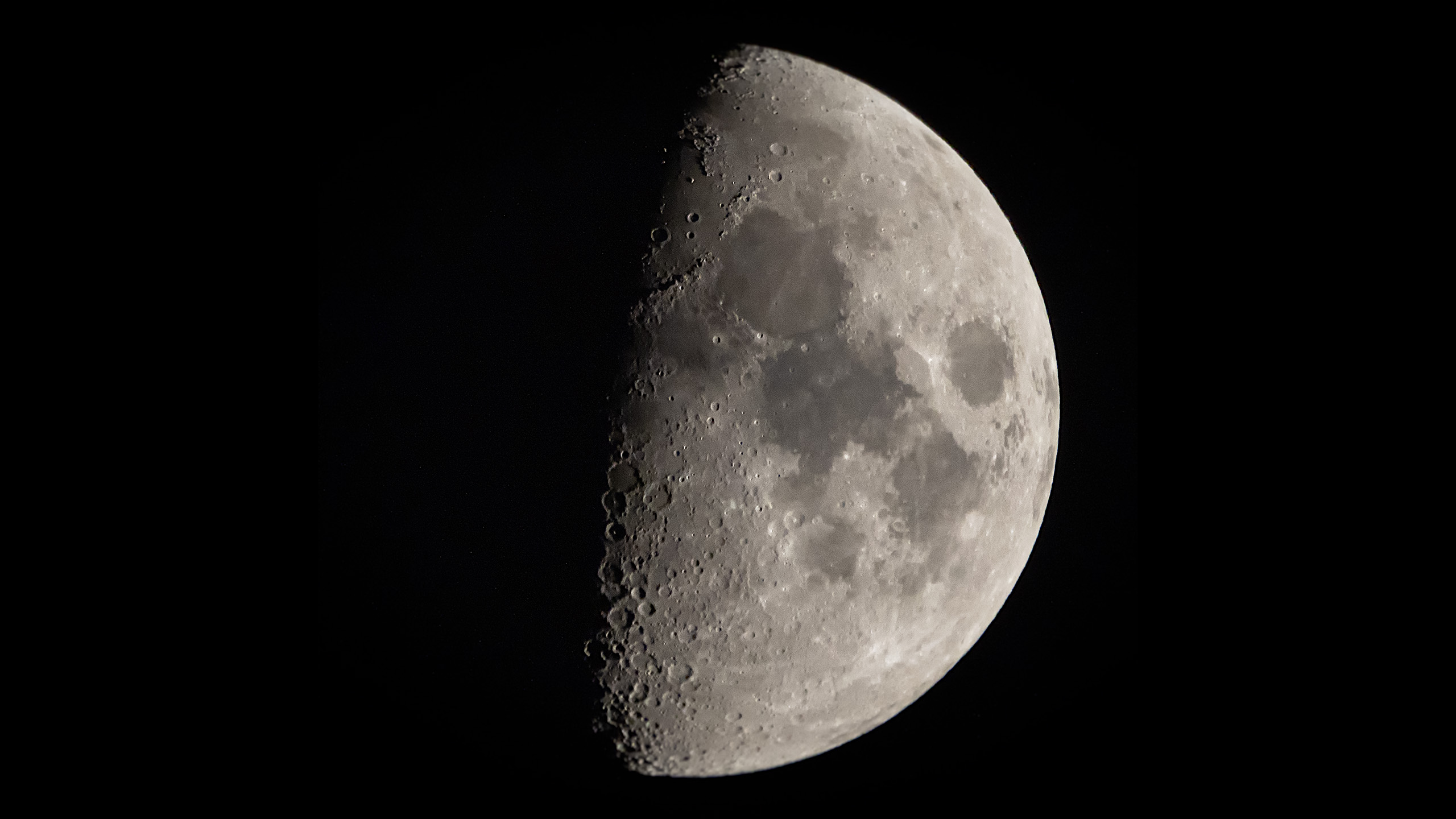
by successfulbob | Olympus OM-D E-M1 Mark III, photography gear, wildlife photography
Taking the Olympus M. Zukio 100-400mm f/5.0-6.3 lens out for a spin. I’m liking it.
2X teleconverter
One of my favorite parts of the 100-400 is being able to add the 2X teleconverter MC20. While I lament the f/13 aperture I enjoy the extended reach. The field of view is similar to a 1600mm lens on a full frame 35mm camera. Makes getting more frame-filling images when photographing wildlife a whole lot easier.
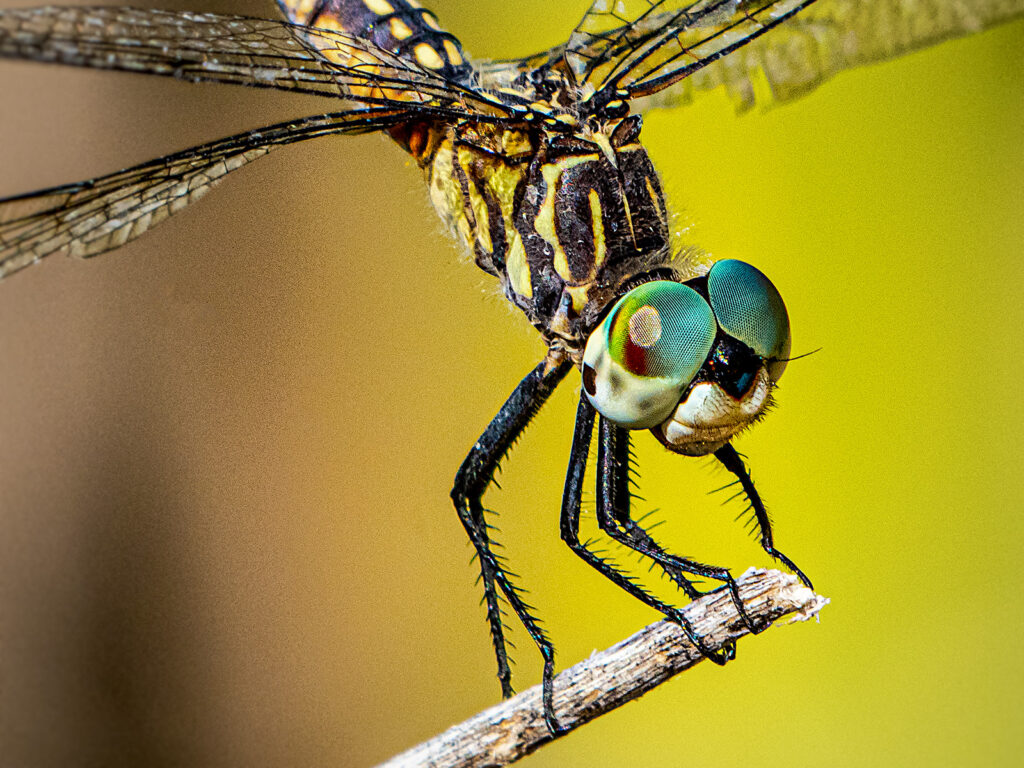
100-400mm with 2x teleconverter on FotoPro Tripod
Here’s a close-up I was able to get of a dragonfly. It’s pretty amazing that it even shows the facets in the eyes. The camera was mounted on a Fotopro Eagle E6L Tripod with built-in gimbal head for easy adjustments as the little critters maneuver between reeds.
Moon
I was enjoying the dark skies of Sedona from my back patio. Just for fun I grabbed the 100-400mm 2X combo on the OM-D E-M1 Mark III and shot the moon.
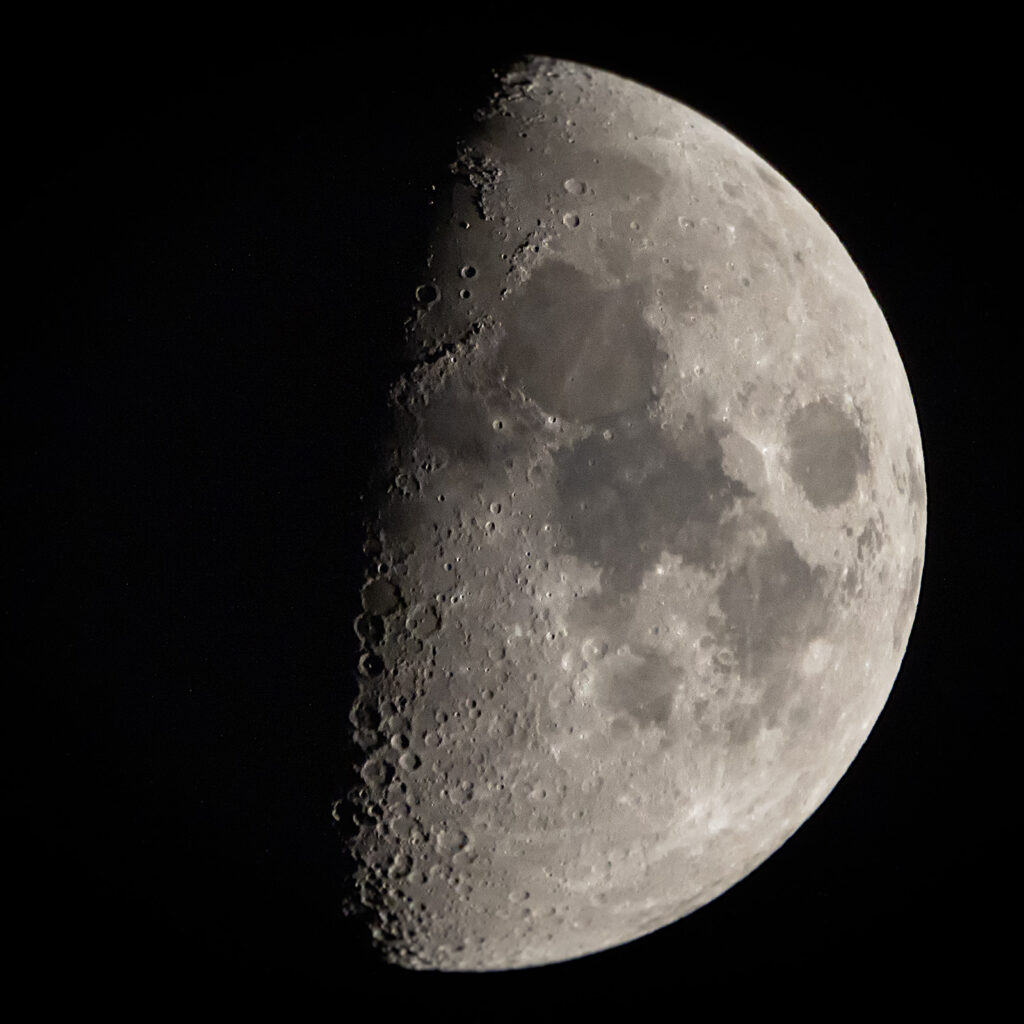
Incredible detail handheld 1600mm field of view.
Lens fully extended. Handheld at 1/400th of a second. After cropping down to the square I ended up with a file size about 2200 pixels.
Yours in Creative Photography, Bob

by successfulbob | fine art photography, lens based art, photography, wildlife photography
Getting ready to head to New Mexico next week for the Festival of the Cranes held in Socorro and Bosque del Apache National Wildlife Preserve. (11/20-11/23) As the cover artist my crane art image will grace the cover of the brochure. In addition, it will be available for sale on T-shirts and coffee mugs. Sales of those items help support the friends of the Bosque and support the festival.
I’ll be on site with wildlife and avian art for sale, including prints of the cover art.
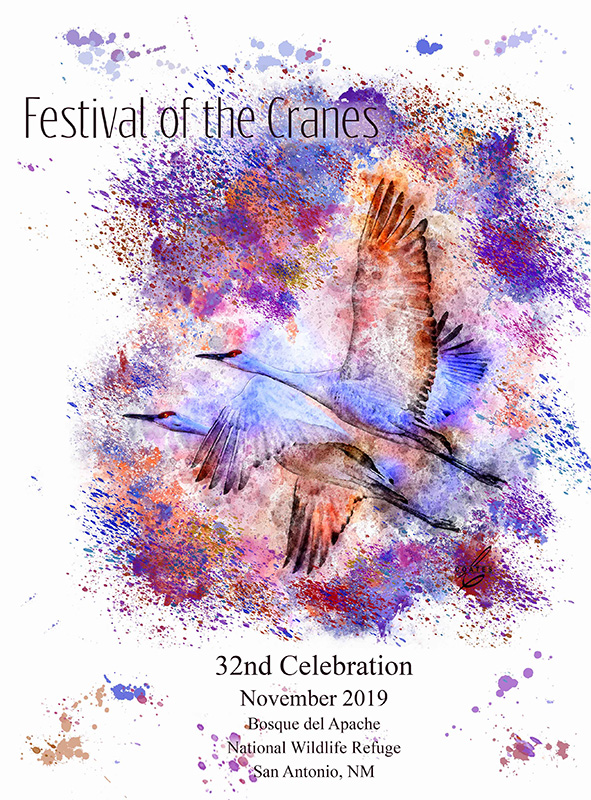
Cover for the Festival of the Cranes
As always I’d be happy to chat with you about techniques, photography, and/or commissions. You can see more of my work by checking out my art site. coatesart.net
Yours in Creative photography, Bob
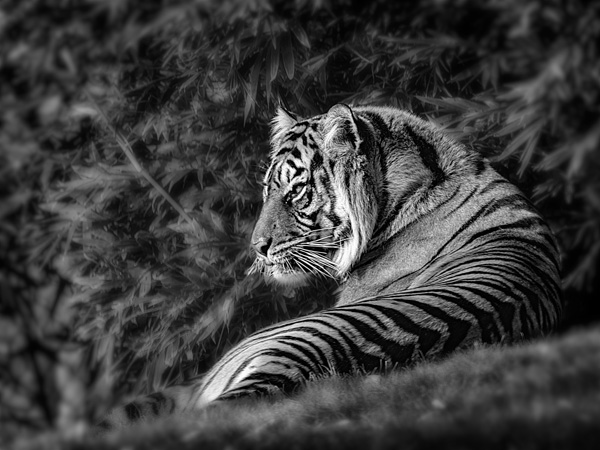
by successfulbob | bird photography, black & white, Lumix G9, photography, photography education, photography gear, wildlife photography
Creating Good Animal Photos from a Captive Environment – Part Two
Last zoo post I was sharing some ideas on learning wildlife photography skills while photographing captive animals. See Part One here
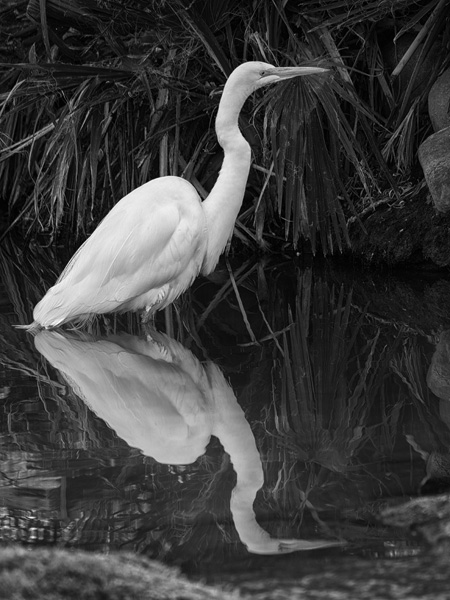 I followed this Great White Egret until the reflection was completed from beak to tail. The black and white treatment brings the bird to the highest contrast attention
I followed this Great White Egret until the reflection was completed from beak to tail. The black and white treatment brings the bird to the highest contrast attention
One of the essential skills is to learn to queue on behavior. This means learning to see when the behavior will change. What will happen when you look at the feathers shaking in a certain way or excrement fall from a bird. These are indicators that signal flight or a change of wing position and either of those can lead to a more interesting photograph.
 Processed this image to BW also. Slight sharpening of the tiger using Skylum software as an Adobe Photoshop plug-in. I also softened the foreground and background with a gaussian blur as well as a darkening Curves layer Significant help for me that increased my ‘keepers’ in photographing images of animals in zoos, parks and in the wild was a lens that has a long reach. The micro 4/3rds Panasonic Lumix system has been an enormous help. Being able to handhold an 800mm equivalent lens makes a huge difference because of the mobility and distance from the animals. The less you disturb your prey and having the ability to still fill the frame is golden.
Processed this image to BW also. Slight sharpening of the tiger using Skylum software as an Adobe Photoshop plug-in. I also softened the foreground and background with a gaussian blur as well as a darkening Curves layer Significant help for me that increased my ‘keepers’ in photographing images of animals in zoos, parks and in the wild was a lens that has a long reach. The micro 4/3rds Panasonic Lumix system has been an enormous help. Being able to handhold an 800mm equivalent lens makes a huge difference because of the mobility and distance from the animals. The less you disturb your prey and having the ability to still fill the frame is golden.
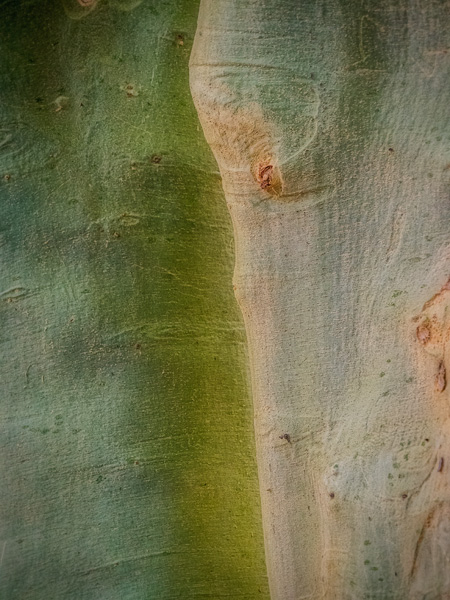 Don’t lose sight of other opportunities when photographing wildlife. This split tree trunk was good for an abstract look of colors and tones.
Don’t lose sight of other opportunities when photographing wildlife. This split tree trunk was good for an abstract look of colors and tones.
My main camera these days is the Lumix G9. The stabilization system gives an extra six and one-half to seven stops of hand-holdability. This means that hand holding a lens of 800mm equivalent at 1/60th of a second is very possible with sharp results. My favorite lens is a zoom lens – Leica 100-400mm f4.0-6.3
Yours in Creative Photography, Bob
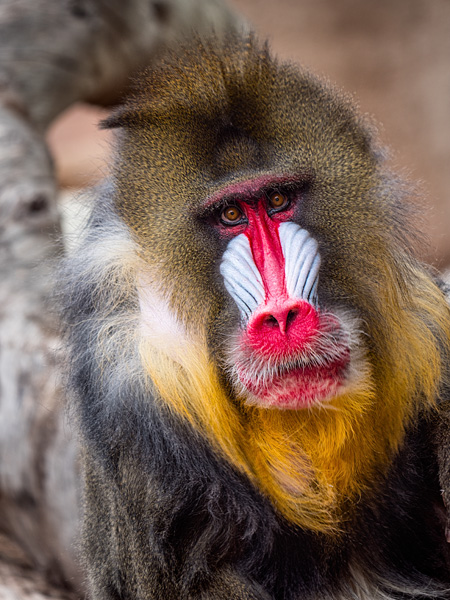
by successfulbob | inspiration, photo walkabout, wildlife photography
Creating Good Animal Photos from a Captive Environment
I practice my wildlife photography by spending time at the zoo. There are a few reasons for this, and I’ll share them here to hopefully help you in your image creation and get feedback from you on my thoughts. You can always reach me through my email [email protected]
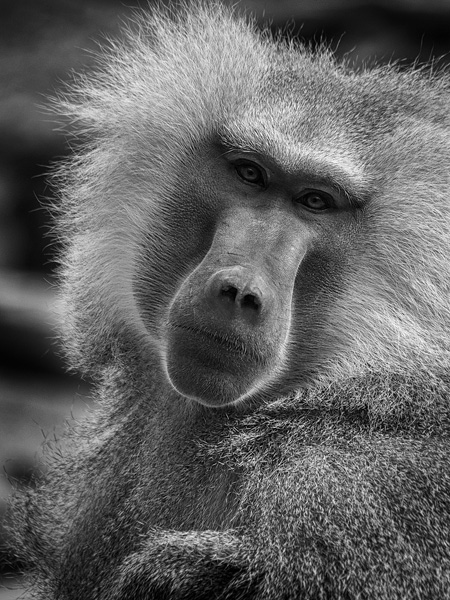 A baboon named One at the Phoenix Zoo. I spent a bit over an hour waiting to get this portrait with eye contact in decent light. Black and white allow for concentration on his expression.
A baboon named One at the Phoenix Zoo. I spent a bit over an hour waiting to get this portrait with eye contact in decent light. Black and white allow for concentration on his expression.
One benefit of photographing in a structured environment is that you can find animals. I know that it sounds simple at its most basic but you need the practice to become a good wildlife photographer. Exercise may be had at the zoo. Part of the training is to learn to focus quickly and in the right place. You may think this can be easy, but until you have tried it, I think you’ll be surprised how difficult it can be to acquire arresting and exciting photos.
 This Mandrill was sleeping for quite a while, but I hung around until he started foraging around in his enclosure. Expression and eye contact are paramount in making this a success. (the color of his features don’t hurt either!)
This Mandrill was sleeping for quite a while, but I hung around until he started foraging around in his enclosure. Expression and eye contact are paramount in making this a success. (the color of his features don’t hurt either!)
Just because the animals are captive does not mean that they will pose for you. Things such as eye contact and behavior can make or break an image. One of the items on which you are practicing is to see how an animal moves. How to stop that movement (or accentuate it for something more artistic).
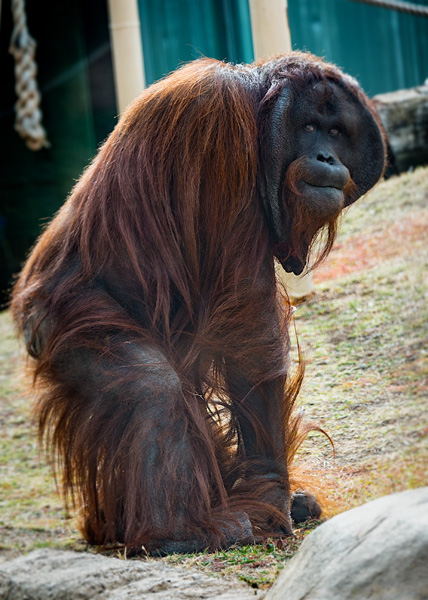 This Orangutan was walking away, and I mentally willed her to look at me over her shoulder. I will often ask mentally for my wildlife to change position and it’s pretty cool how often it works.
This Orangutan was walking away, and I mentally willed her to look at me over her shoulder. I will often ask mentally for my wildlife to change position and it’s pretty cool how often it works.
If I can suggest one thing that you will learn that you can take with you into nature is patience. Even though you are in a target rich area, you still need to spend time, and lots of it, to get images with eye contact. If you run from enclosure to enclosure thinking you will get more varied photos you will be correct. But I suggest that the pictures will be less than stellar than if you spend more time with fewer animals.
More from the Phoenix Zoo in the next couple of days. Including the gear I use for making my images.
Yours in Creative Photography, Bob
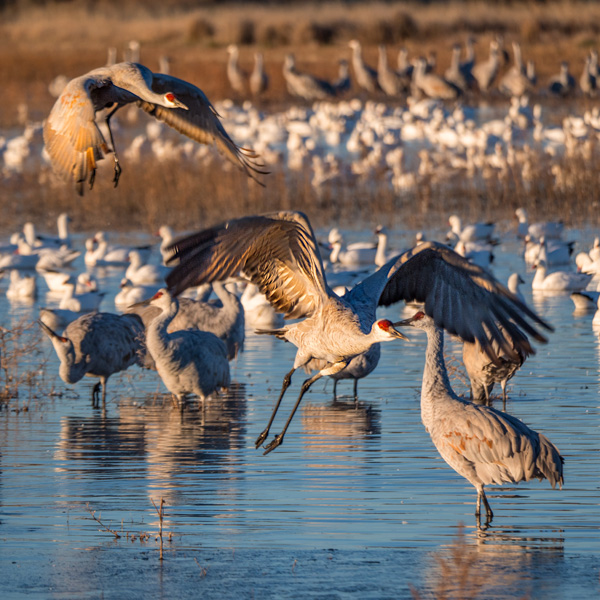
by successfulbob | bird photography, Lumix G9, travel photography, wildlife photography
Festival of the Cranes
Bosque del Apache National Wildlife Refuge – Part Three
I enjoy spending time with wildlife.
Watching. Waiting. Learning.
To get the best wildlife images it is important to study the behavior patterns of your prey. Especially in avian photography. Learning when a bird is about to make a move leads to obtaining more than a portrait. Portraits are cool, but my favorite images are highlighting behavior. A mating dance. A flight. A landing. Feeding or grooming all lend more to the captured image in my opinion.
These images are from the Festival of the Cranes in Socorro, New Mexico just a bit south of Albuquerque. I shared pictures from the event, but the previous ones were of Snow Geese. These are the stars of the show, Sandhill Cranes.
Let me know what you think!
 In for a landing during first light at the first pond – Bosque del Apache NWR
In for a landing during first light at the first pond – Bosque del Apache NWR
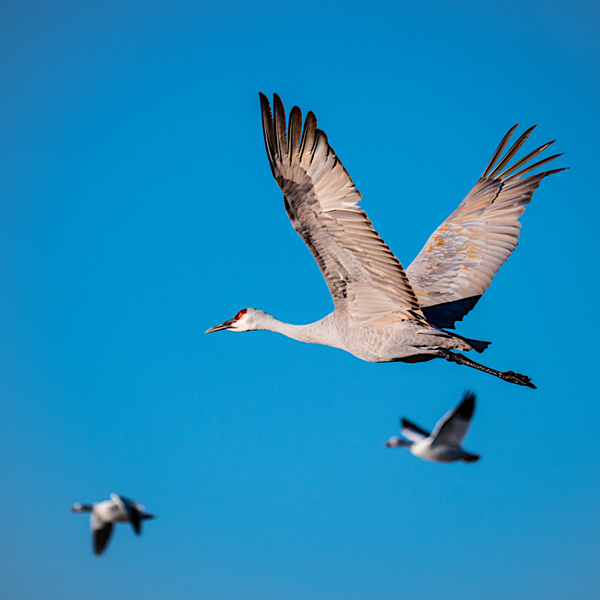 Sandhill Crane in flight (with a couple of snow geese interlopers in the background)
Sandhill Crane in flight (with a couple of snow geese interlopers in the background)
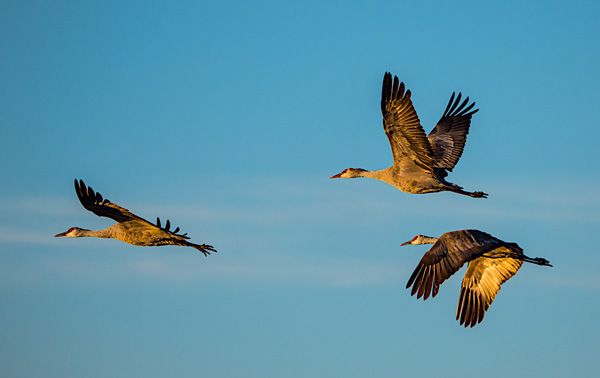 In the warm glow of sunrise here’s the classic capture of three Sandhills with the three wing positions
In the warm glow of sunrise here’s the classic capture of three Sandhills with the three wing positions
More Sandhills in the next day or so. For more from the Bosque NWR see these posts with the Snow Geese.
Bosque Part One
Bosque Part Two
The previous posts have the information on the camera gear and links to find it.
Yours in Creative Photography, Bob



















